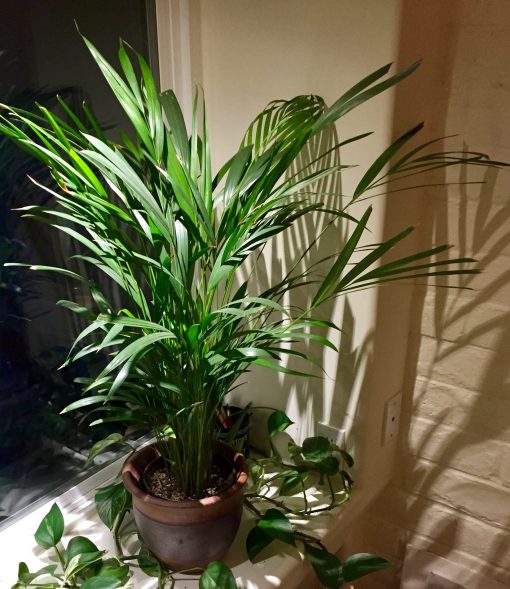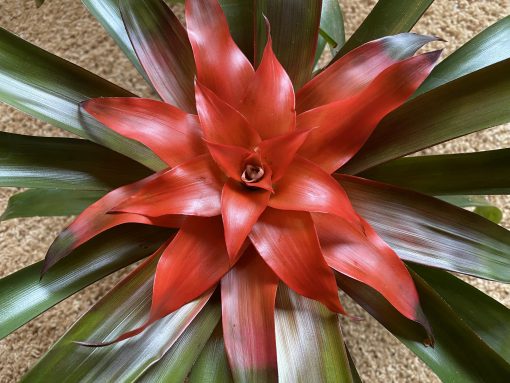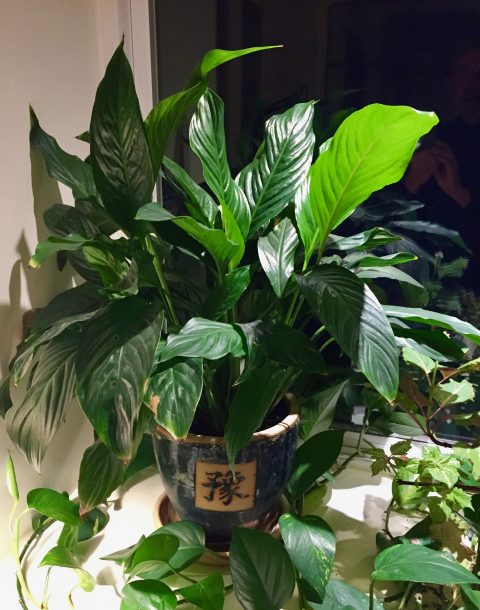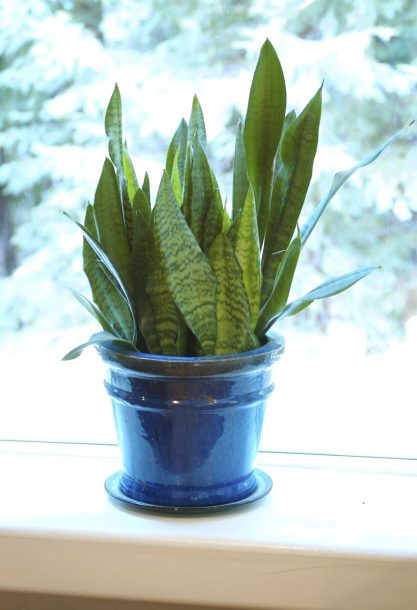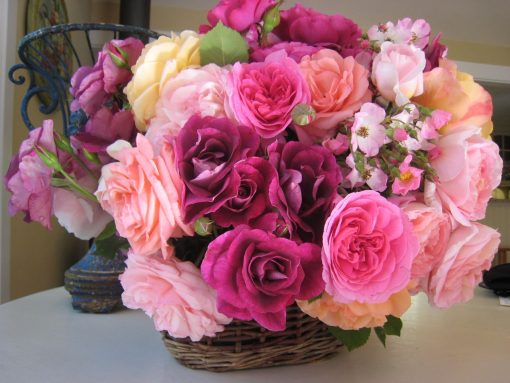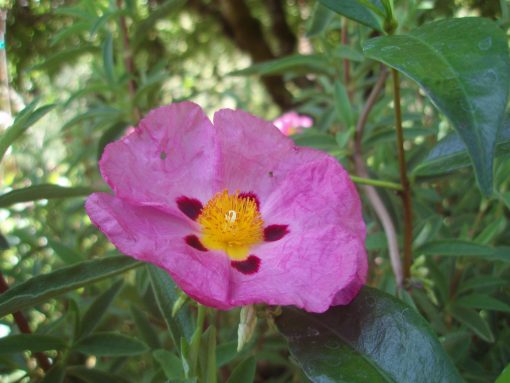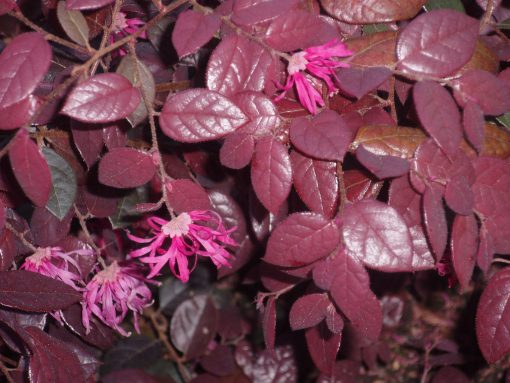
The other day I visited 3 local nurseries to see what’s new in their bare root edible selection. In addition to the classics I found a ton of new varieties for containers and smaller home gardens. Now is the time to add ornamentals and edibles like fruit, nuts, berries and vegetables while they’re available in bare root form. They are easy to plant, economical and establish quickly.
What first caught my eye at Mountain Feed & Farm Supply in Ben Lomond was the selection of blueberries for containers. I’d have a hard time deciding between Pink Icing, Jelly Bean or Peach Sorbet which is described as having summer leaves of peach, pink, orange and emerald green and grows only to 2 feet.
There are so many fruit trees now available for the home gardener. If you have limited space there are multi-graft trees that combine compatible pear, peach, apple, plum and nectarine. There’s even a “fruit cocktail tree” that combines totally different stone fruits.
Then the selection of miniature nectarines and peaches caught my eye. Scarborough Gardens in Scotts Valley also has a nice selection of these showy spring bloomers with delicious full size fruit including Necta Zee. This sweet, very flavorful yellow freestone has beautiful red skin, ripens in late June to early July and is self fruitful. Dwarf peaches and nectarines grow to about 6 feet making them perfect for the smaller garden.
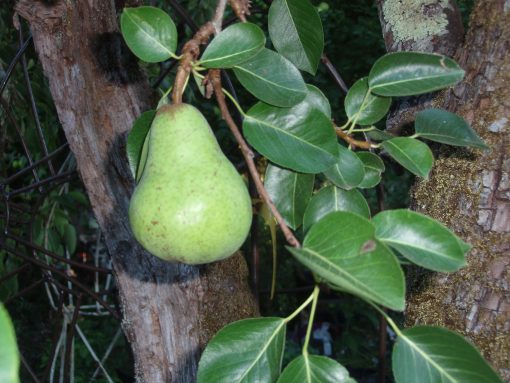
If you’ve always wanted a Bartlett Pear but didn’t think it would grow in your garden think again. I saw a Southern Bartlett at Scarborough Gardens. This chance sport needs 400 or fewer chilling hours and was found on an old Louisiana homestead, It is self fruitful.
Shop for your plants in January or February while they are still dormant. Once leaves emerge or flower buds start to swell, roots have already started growing. You want your tree to start developing new permanent roots in their final home. Stone fruits such as apricots, peaches, plums and cherries are going to start waking up first so they are best put in the ground soon. Fruit trees like pears and apples wake up later so you can wait a bit longer to plant those varieties.
What fruit tree varieties can you grow here in the mountains? Well, almost everything. Most of us get 700-900 chilling hours per winter. What does that mean? Well, many fruit trees, lilacs and peonies need a certain number of hours during dormancy where the temperature is 45 degrees or less. You can give the plant more chilling in the winter but not less. Those in coastal Santa Cruz can grow Fuji apples as they require only 300 hours of chilling but not Red Delicious. We can grow both. Late rains can knock blossoms of a low-chill tree that has broken dormancy but we gardeners bet on the weather cooperating all the time. Some years you win, some years nor so much.
What if you don’t get full sun where you’d like to grow fruit trees? Apples, pluots and plums are good choices for an area that gets some sun- at least 5 hours a day during the growing season. The ideal is full sun but these trees will still set and ripen some fruit in partially shaded conditions. With peaches, nectarines or apricots it’s a different story. These fruits need hot sun to develop sweet, tasty fruit. Too little sun and they will not deliver anything close to what you have in mind.
What’s the correct way to plant a bare root tree? Mountain Feed & Farm Supply in Ben Lomond has a great web site with all the information you need to get your new fruit trees off to a good start including planting, pruning, staking, mulching and care as they mature. Visit www.mountainfeed.com for all the information you need.
Don’t plant in heavy saturated soil with a high clay content, however. If your soil drains poorly it’s best to place your bare root tree at an angle in a trench, cover with soil and water in. Wait to plant until the soil is crumbly and friable with plenty of pore space. Digging in waterlogged clay soil is one of the worst things you can do for your soil’s health.
With a little planning you can have fresh fruit 7 months of the year. By growing your own fruit you’re not at the mercy of mechanical harvesters and shipping practices. You can grow fruit and harvest it when the time is right. Homegrown fruit is a world apart from agribusiness and much less expensive than the Farmer’s Market.

